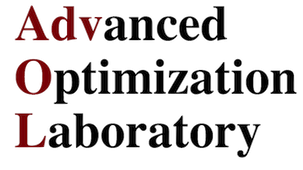| Speaker: | Danielle Zyngier |
| Optimization Specialist, Hatch |
Title: A General Framework for Representing Production Planning and Scheduling Problems in the Process Industries
In order to represent manufacturing systems, the physical layout of a production environment must be combined with its procedural characteristics (such as modes of operation of equipment) in order to properly describe the behaviour of production as a whole. The two most prominent approaches for the representation of production systems in the Chemical Engineering literature, namely the State-Task Network (STN) (Kondili et al., 1993) and Resource-Task Network (RTN) (Pantelides, 1994) originated from a sequential, batch-type view of production, in which a sequence of tasks is performed on renewable and/or non-renewable resources (states). These representations, however, fail to incorporate some peculiarities of many industrial systems, such as limitations in storage capacity and limited connectivity between different pieces of equipment.
This talk highlights an alternative paradigm for the representation of planning and scheduling systems: the Unit-Operation-Port-Stock Superstructure (UOPSS). This representation is based on extending the process flow diagram of a production system in order to incorporate its procedural aspects. Differently from STN and RTN representations, UOPSS is able to account for capacitated problems as well as limited connectivity, in addition to being a more natural, flowsheet-like representation, in particular for the continuous process industry - while also being suitable for batch process industries.
In addition to the network representation of production, the structure of planning/ scheduling models must take into account cycle data, or production orders. This refers to data that usually changes at every planning/ scheduling cycle, such as supply and demand orders, maintenance orders, operation orders, amongst others. This talk also addresses the architecture of such a decision-support system, in addition to some modeling details of the production objects. The wide range of applicability of this representation is illustrated by successful industrial implementations.
(joint work with Jeffrey D. Kelly, Industrial Algorithms)


